Horseshoe Bend National Military Park
Introduction
Text-to-speech Audio
Images
Welcome sign at Horseshoe Bend Military Park
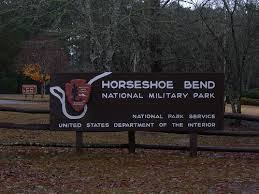
Map of the Battle of Horseshoe Bend
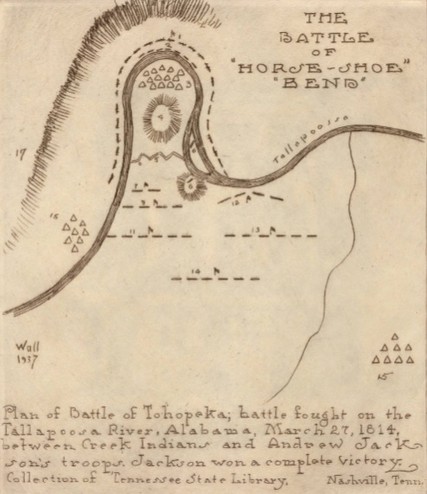
Map of Horseshoe Bend by Indian ageny Leonard Tarrant
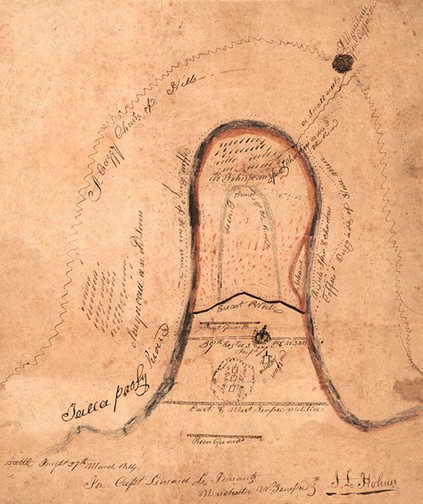
Battle of Horseshoe Bend (or Tohopeka)
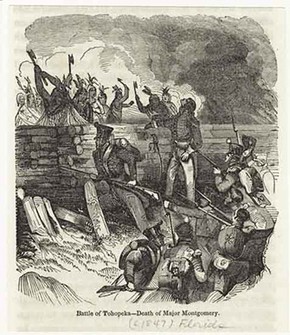
Creek Chief Menawa, the leader of the Creeks at Tohopeka
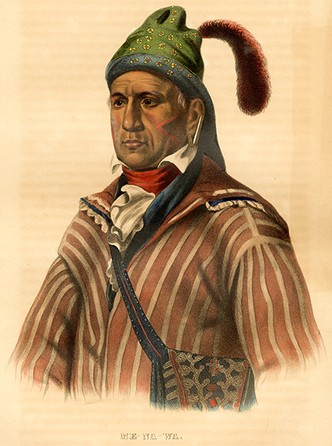
General Andrew Jackson circa 1837
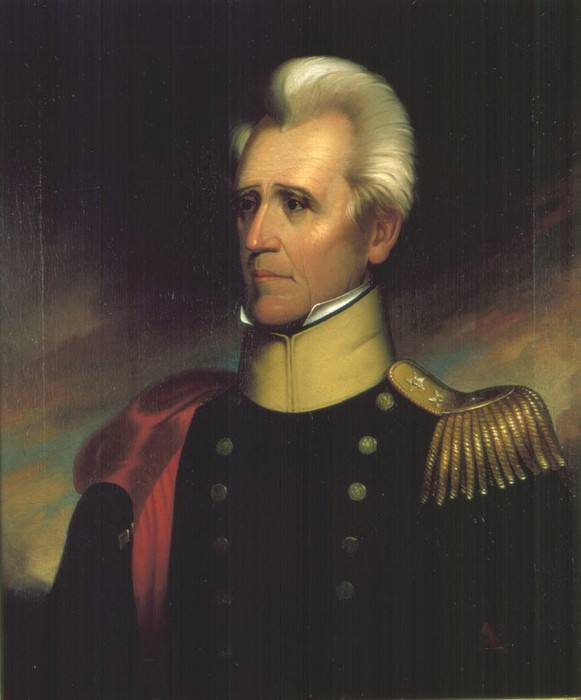
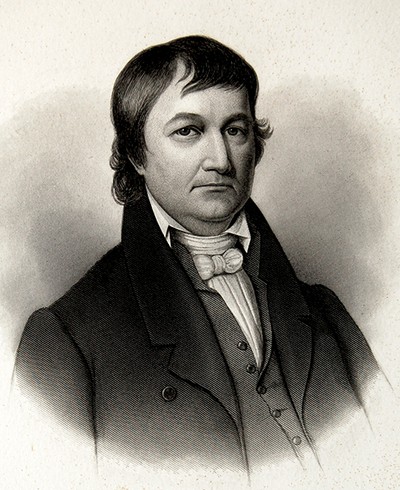
A depiction of the Treaty of Fort Jackson
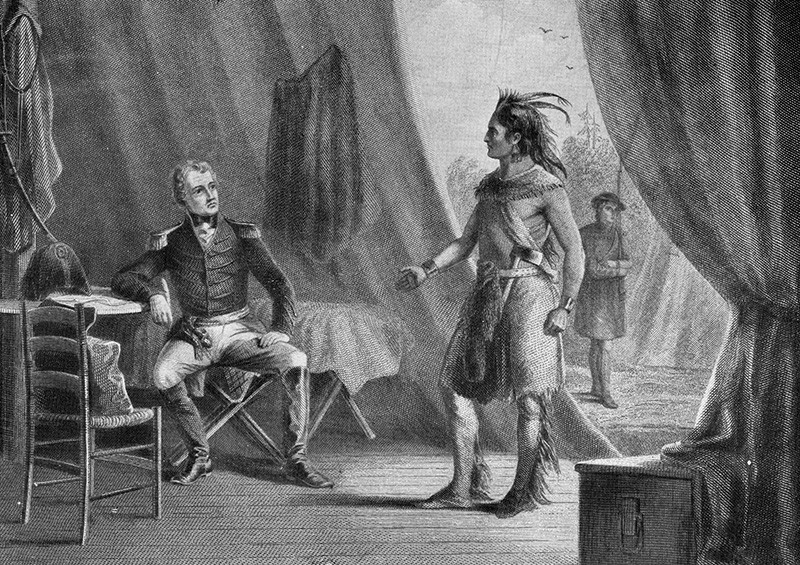
Backstory and Context
Text-to-speech Audio
During the early 19th century, the Creek (or Muscogee) people struggled with the changes wrought by white settler colonialism. Although their traditional lands incorporated much of present day Alabama, Georgia, and northern Florida, white American settlers increasingly encroached on their territory. While some Creeks forged stronger trade relations with the Americans and adopted aspects of white society and culture, other nativist Creeks resented the loss of both their lands and tribal identities. These geopolitical and cultural tensions simmered within Creek society.
In 1812, the United States and Great Britain declared war upon each other. In the North, a confederation of Native Americans under Shawnee leader Tecumseh cast their lot with Great Britain. Tecumseh hoped to forge a continental pan-Indian alliance that could stymie Americans’ westward settlement and limit whites’ cultural influence. His ideas gained currency among a number of nativist Creek leaders, particularly those from the Upper Towns in Alabama (therefore called Upper Creeks, as opposed to primarily Georgian Lower Creeks). Internal debates over whether to join Tecumseh’s cause and attack Americans or not eventually broiled over into a Creek civil war; the nativist Red Sticks (named for their distinctive red-painted war clubs) attacked the leaders and villages of those who sought to remain friendly with the Americans.
In August 1813, the war took on a new dimension when a large party of Red Sticks attacked and killed a party of 250 enemy Creek and American settlers at Fort Mims, north of Mobile. The Fort Mims Massacre forced the United States to intervene, and large forces of Tennessee, Georgia, and Mississippi Territory militia were called into action, as were eventually a small force of U.S. regulars.
After clashing several times with the Red Sticks, in the spring of 1814 Tennessee militia General Andrew Jackson set out to strike a decisive blow against the rebellious Creeks by attacking the large, fortified Creek encampment of Tohopeka within the Horseshoe Bend of the Tallapoosa River. Tohopeka contained some 1,000 Red Stick warriors and 350 civilians living in 300 log houses. As the river’s horseshoe bend protected (and also trapped) the Red Sticks on three sides, they fortified the bend’s land neck with a 400-yard log and dirt barricade. Led by Menawa, the Red Sticks believed they could hold off any enemy, but they had prepared secondary defensive positions behind the barricade as well. A large number of canoes offered an opportunity to escape the bend if necessary.
On March 27, 1814, Gen. Andrew Jackson’s army approached Tohopeka. Jackson had 3,300 men with him, mostly regional militia but also regulars of the 39th U.S. Infantry and at least 600 Cherokee and Lower Creek Indian allies. With superior numbers, Jackson divided his force. He sent 1,300 men, including the Cherokees and Creeks, under General John Coffee’s command downriver to surround Horseshoe Bend from the opposing bank and prevent any Red Sticks from escaping. Meanwhile, Jackson took the rest of his men and advanced directly on the barricade. He used artillery to bombard the Indians’ position for two hours and selected the disciplined regulars of the 39th Infantry to make a frontal assault.
Unbeknownst to Andrew Jackson, the allied Indians under John Coffee had determined to do more than simply await the battle’s outcome. A number of Cherokees and Creeks under Coffee quietly swam across the river and slipped into Tohopeka, stealing canoes to ferry more and more men across. The Red Sticks, whose attention was focused on Jackson’s bombardment to their front, were unaware of the enemy’s infiltration of their rear. The Cherokees and Creeks set fire to Tohopeka’s log cabins and began clashing with the Red Sticks from behind. Seeing smoke from the burning village and hearing gunshots, sensed the moment had arrived and ordered the 39th Infantry forward. The U.S. regulars swept towards the barricade, and fierce hand-to-hand combat ensued with the Red Sticks (many of whom were armed with bows, arrows, and clubs rather than rifles).
Unable to stop the regulars’ advance and with enemy Indians behind them, their position collapsed. Surrounded by the enemy and the Tallapoosa River, many Red Sticks attempted to flee by swimming across the river to safety. However John Coffee’s men were waiting and shot many of them down as they tried to escape. The battle devolved into a slaughter. The Red Sticks suffered 557 killed on the battlefield, while another 300 were thought to be killed in the river. Approximately 350 Red Stick women and children were taken captive. Only a lucky few Red Sticks managed to escape, including Chief Menawa, who hid among the dead until nightfall before crossing the river. Jackson suffered 49 killed and 154 wounded.
The American victory at the Battle of Horseshoe Bend effectively quashed the Red Stick rebellion. On August 9, 1814, the victorious Jackson signed the Treaty of Fort Jackson with the defeated Creeks, who were forced to ceded 22 million acres of land (most of which became Alabama). Jackson went on to achieve fame by defeating the British at the Battle of New Orleans in January 1815, and his battlefield exploits helped him ascend to the presidency. As president, Jackson signed the Indian Removal Act of 1830, which forced the Creeks and other Southeastern Indian tribes to forcibly migrate west of the Mississippi River via the Trail of Tears.
In 1956, Congress established Horseshoe Bend National Military Park to preserve and interpret the battlefield and the Creek War; it opened for visitation in 1964. A Visitor Center provides information, and visitors can tour the site via a driving tour and walking trails. The park enjoys nearly 100,000 visitors annually.
Sources
1. Ove Jensen. "Battle of Horseshoe Bend." January 11, 2017. Encyclopedia of Alabama. Web. Accessed November 22, 2020. http://encyclopediaofalabama.org/article/h-1044
2. John R. Elting. Amateurs, to Arms! A Military History of the War of 1812. New York, NY: De Capo Press: 1995.
3. Ethan Moore. "Spring 1814: The Battle of Horseshoe Bend." National Park Service. Web. Accessed November 22, 2020. https://www.nps.gov/articles/behind-the-sharp-knife.htm
4. Howard T. Weir III. A Paradise of Blood: The Creek War of 1813-1814. Yardley, PA: Westholme Press, 2014.
5. Joel W. Martin. Sacred Revolt: The Muskogees' Struggle for a New World. Boston: Beacon Press, 1991.
6. John T. Ellisor. "Creek War of 1813 and 1814." Tennessee Encyclopedia. March 1, 2018. Web. Accessed November 22, 2020. http://tennesseeencyclopedia.net/entries/creek-war-of-1813-and-1814/
7. Claire M. Wilson and Ove Jensen. "Horseshoe Bend National Military Park." September 26, 2019. Encyclopedia of Alabama. Web. Accessed November 22, 2020. http://encyclopediaofalabama.org/article/h-2998
Tennessee Virtual Archive: https://teva.contentdm.oclc.org/digital/collection/bernhardt/id/88/
Alabama Dept. of Archives & History: http://encyclopediaofalabama.org/article/m-6274
New York Public Library: https://www.nps.gov/articles/behind-the-sharp-knife.htm
Encyclopedia of Alabama: http://encyclopediaofalabama.org/article/m-2104
Wikipedia: https://en.wikipedia.org/wiki/Andrew_Jackson#/media/File:Andrew_Jackson_by_Ralph_E._W._Earl_1837.jpg
Alabama Dept. of Archives & History: http://encyclopediaofalabama.org/article/m-4883
